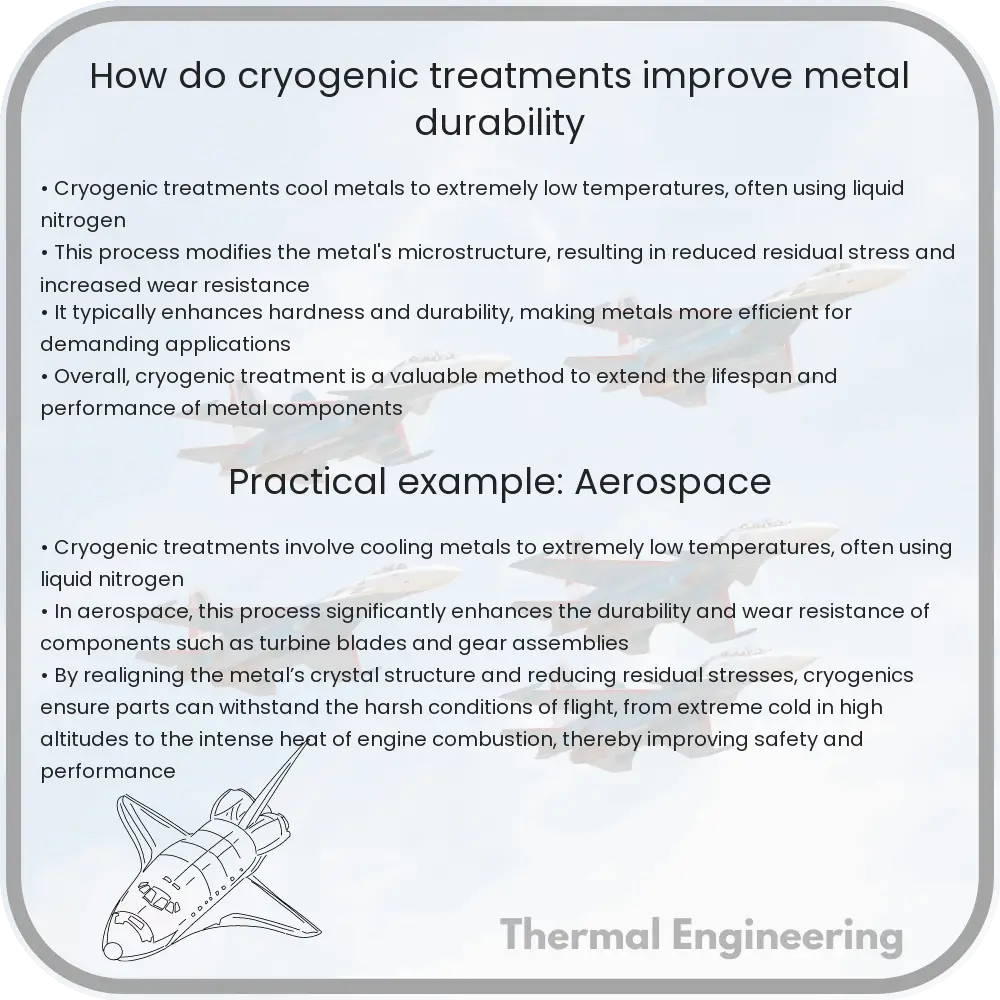Learn how cryogenic treatments enhance metal durability by improving microstructure and increasing resistance to wear and stress.

Understanding Cryogenic Treatments and Metal Durability
Cryogenic treatment is a process that significantly improves the durability and performance of metals, particularly those used in tools, gear components, and automotive parts. This article will explain the fundamentals of cryogenic treatments, how they affect metal properties, and why they are considered beneficial for enhancing the longevity and function of various metallic components.
What are Cryogenic Treatments?
Cryogenic treatments involve cooling a material to extremely low temperatures, often down to -190 degrees Celsius (-310 degrees Fahrenheit) or lower, using liquid nitrogen. The process can be classified into two main types: shallow cryogenic treatment and deep cryogenic treatment. Shallow treatments cool materials to temperatures around -80°C (-112°F), whereas deep cryogenic treatments typically go to -196°C (-320.8°F) or lower.
The cooling process is followed by a gradual warming back to room temperature, and sometimes the application of a tempering heat treatment. This entire procedure can alter the material’s microstructure, leading to improved physical properties.
Effects on Metal Durability
The primary mechanism behind the enhancement of metal durability through cryogenic treatment lies in the transformation and stabilization of the microstructure. Here are key changes that occur during the treatment:
- Conversion of Austenite to Martensite: Some alloys, particularly steels, contain retained austenite which is a less stable phase. Cryogenic treatment helps convert this retained austenite into martensite, a much harder and more stable phase.
- Refinement of Microstructure: The process also refines the grain structure of the metal, which increases its hardness and toughness.
- Reduction of Internal Stresses: Metals treated cryogenically show reduced internal stresses which often result from the manufacturing processes like welding or forging.
- Precipitation of Fine Carbides: During cryogenic treatment, fine carbide particles precipitate out in the steel matrix. These carbides increase the abrasion resistance and strength of the metal.
Practical Applications and Benefits
The improved hardness, wear resistance, and toughness of cryogenically treated metals have practical implications in various industries:
- Increased durability of cutting tools such as drill bits, end mills, and inserts, leading to longer service life and reduced replacement costs.
- Better stability in precision components found in aerospace and automotive industries, which require high levels of dimensional stability and resistance to thermal stresses.
- Enhanced performance of racing components, where superior strength and durability can significantly impact the performance and safety of high-performance vehicles.
Conclusion
Cryogenic treatments offer a compelling method to enhance the properties of metals, thus boosting their performance and longevity significantly. By understanding and applying this advanced process, industries benefit from the reduction in material failures and down times, alongside the optimized performance of components that are critical to their operations. Given these advantages, the adoption of cryogenic processing continues to grow across various sectors, underlining its importance in modern materials engineering.